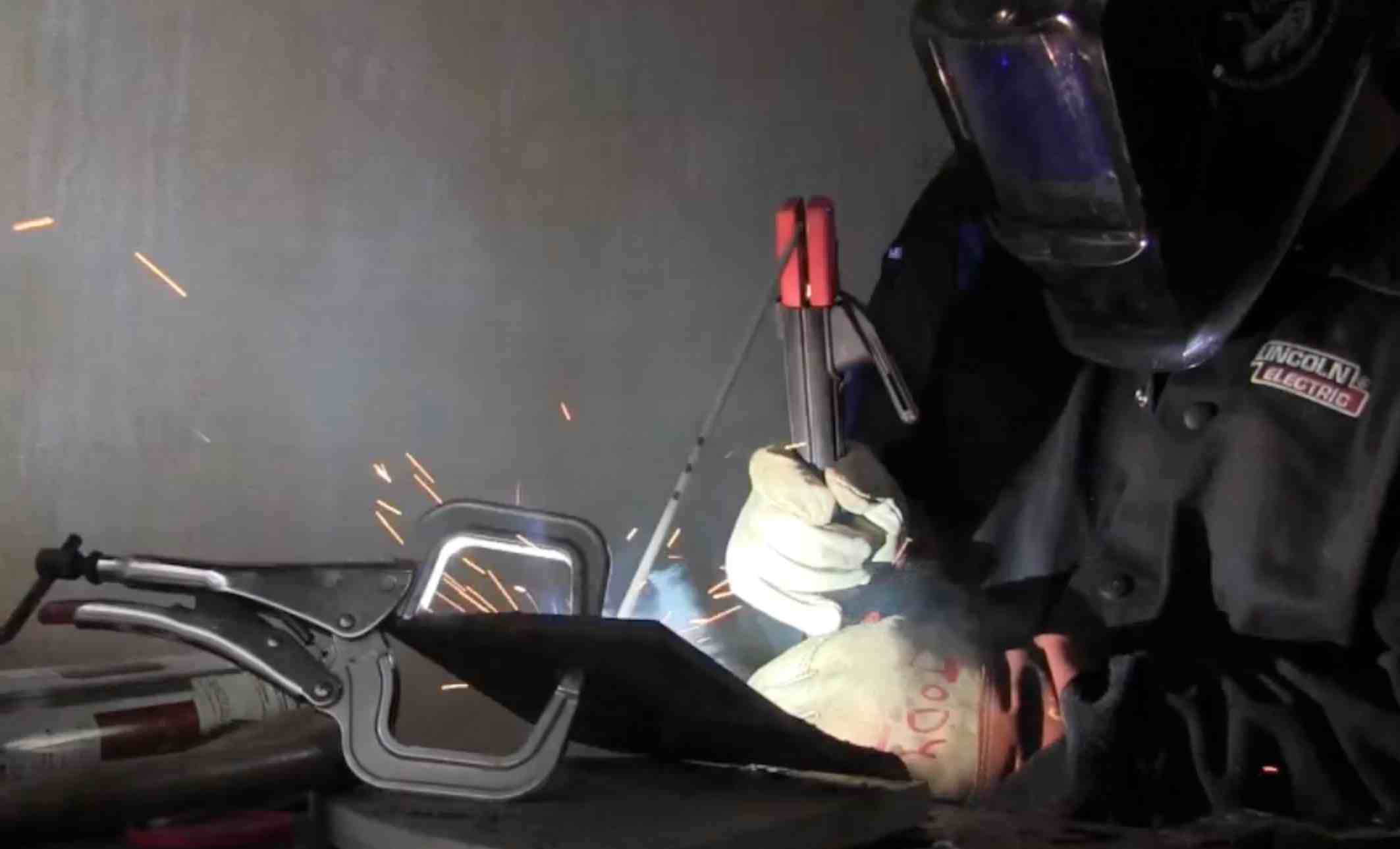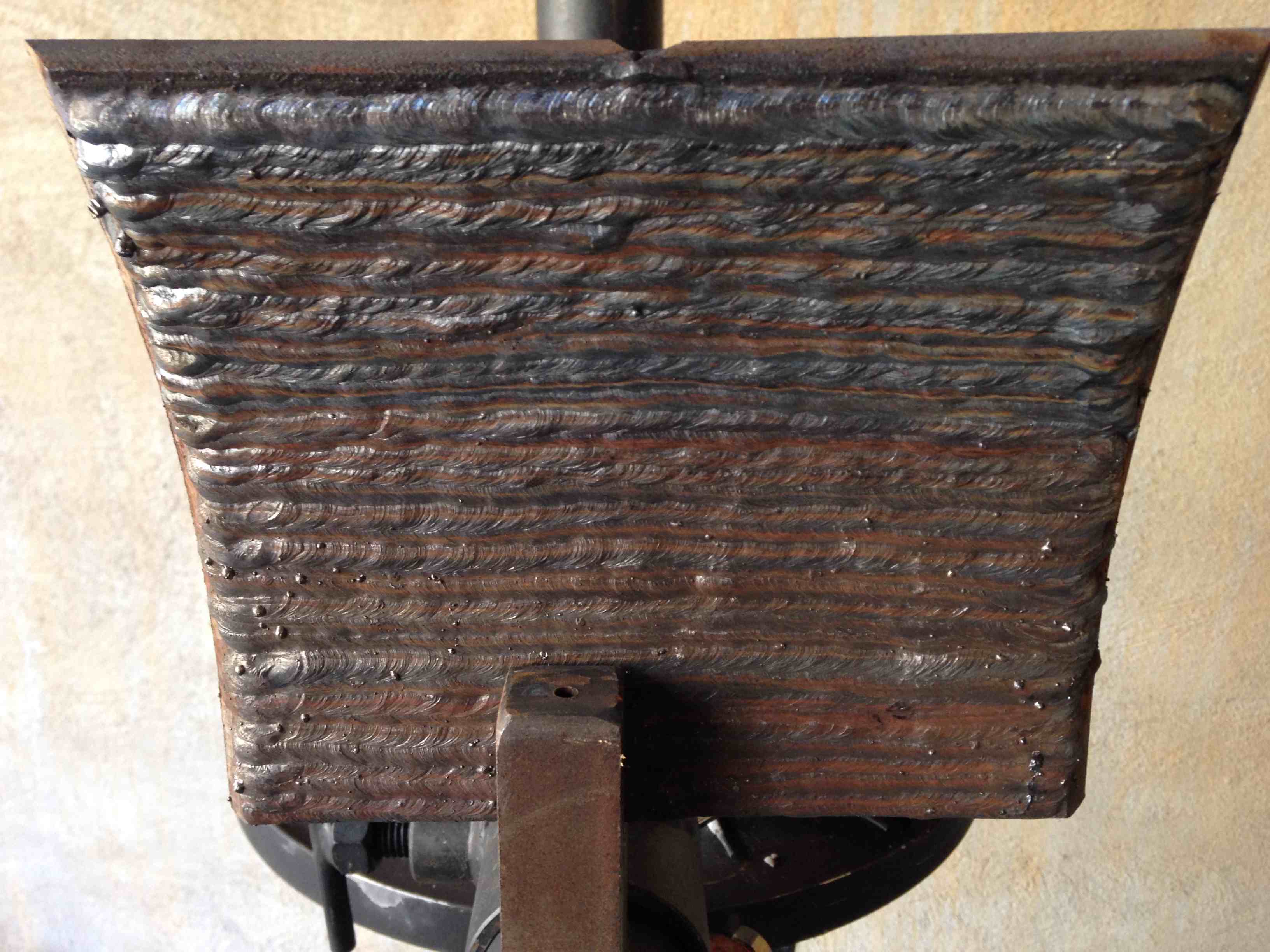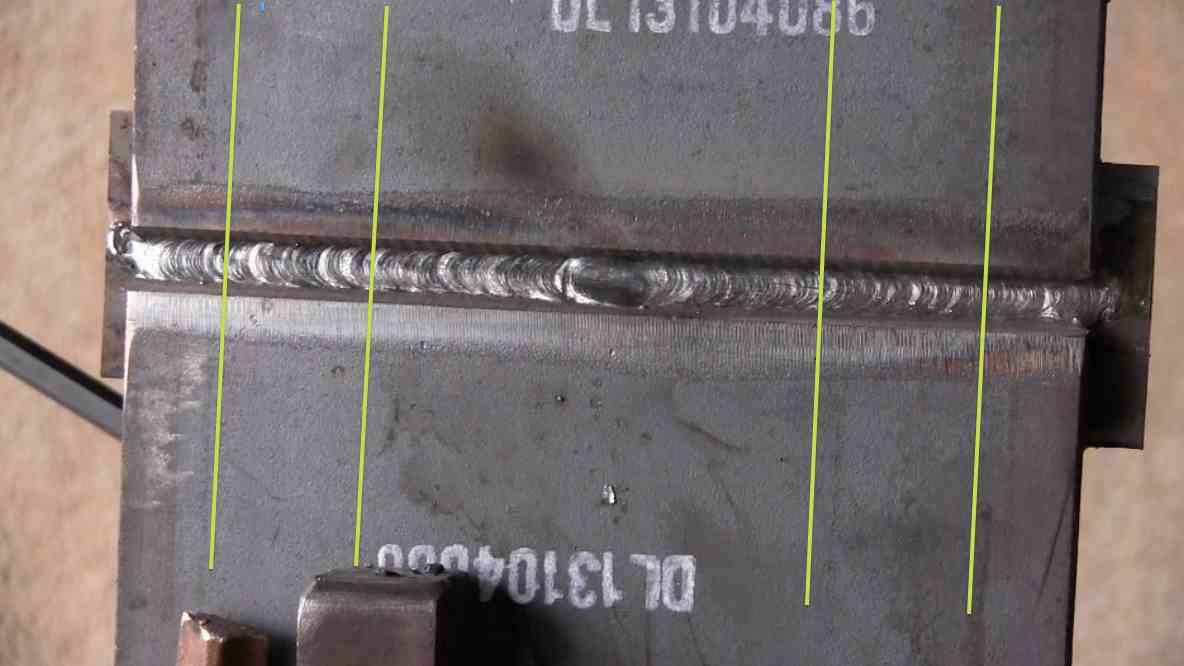7018 Padding Beads Flat and Horizontal
7018 welding rods are the backbone of Welding for the construction industry.
That is why some schools start welders off by padding beads using 7018 rods.
Sure, they are a bit more difficult to restrike, but since most stick welding certification tests use low hydrogen rods like E70 18 , it makes sense to go ahead and start with them.
...and padding beads is a great way to learn any welding rod.
click here to watch a Video on 2g horizontal plate test using 7018
Why pad beads with E7018 rods?

Why pad beads before moving on to Tee Joints, lap joints, and butt joints?
Because Padding beads is the simplest way to learn the fundamentals of running a bead without using a lot of material and without requiring a lot of preparation.
It allows for more seat time.
And there are more reasons....the the molten puddle of a E70 18 rod is much easier for a new welder to distinguish than other rods like 6013, or 7024.
CLAMS

What does CLAMS have to do with welding?
Its just an easy way to remember the variables that you need to be thinking about while you are learning to weld.
C is for Current. Is your amperage right for the size and type of rod you are using...and for the thickness of metal and position you are welding?
L is for Length of arc. A long arc is usually bad. Voltage changes with arc length...it lowers when the arc is tight and raises when the arc becomes greater. For padding beads and most other stick welding, Set the amperage to where the rod does not stick when you hold a tight arc...then ...Hold a tight arc.
A is for Angle of electrode. Angle is pretty forgiving on flat welding. Angle becomes more important when you weld horizontal, vertical and overhead. A very slight drag angle works for most conditions but while you are padding beads, its a good ideas to experiment and see for yourself what effects the angle of the rod has on the weld beads.
M is for Manipulation of electrode. With some rods like the 6010, a whip and pause motion is used. But for 7018 and several other rods, the only manipulation is a steady drag.
S is for Speed of travel. Stick welding is limited on speed.
Each rod is designed to melt at a certain rate and traveling faster is not always possible. Padding beads teaches you to maintain a steady travel speed that is slow enough to avoid undercut...but fast enough to avoid excess weld build up or a sagging bead.
visit the weldmonger store
A good choice for padding
My first couple of days of welding school, I welded bead after bead with 6013 rods.
After that, I never ever welded with 6013 rods on a paying job.
In fact, 6013 rods were not even available on the jobs I worked.
It was all 6010 and 7018...and even some 11018 for high strength steel welds.
I have heard that in the UK, 6013 rods are used a lot for pipe welding...But Here in the USA , 6013 rods are rarely if ever used for code work.
So why practice with 6013 when all the paying jobs use E7018?
I guess thats why some welding schools only uses E7018 for padding beads during the first few days of welding school.
See more stick welding videos
















